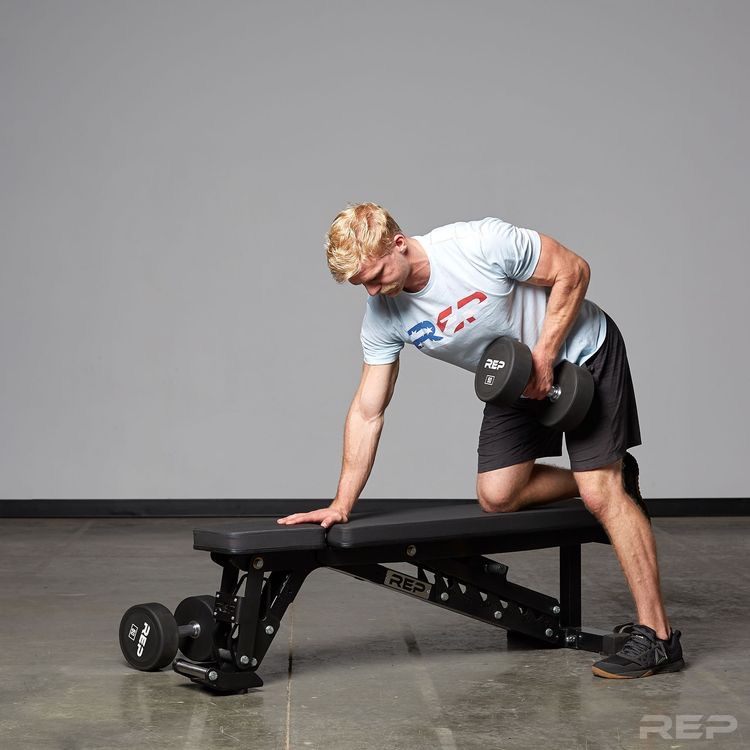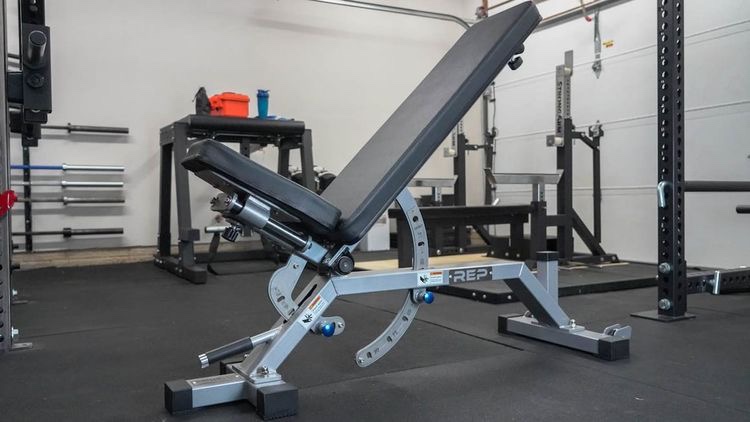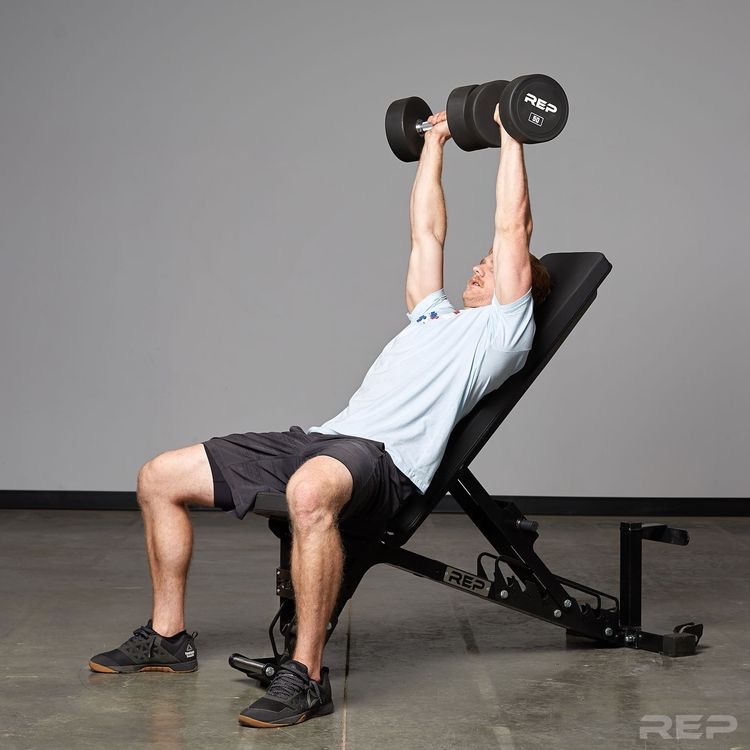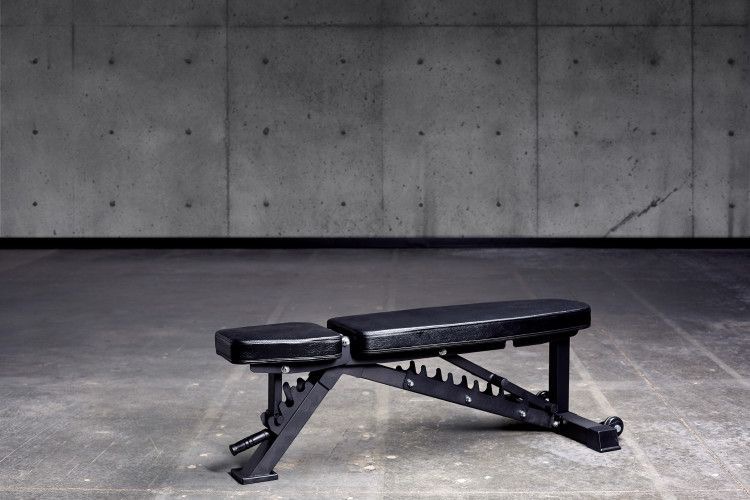When you step into a gym, you’re likely to be greeted by an array of exercise equipment, from treadmills and ellipticals to weight machines and free weights. Among these fitness essentials, one piece of equipment stands tall and indispensable – the adjustable weight bench. A weight bench is not just a simple platform; it is the foundation of countless strength training exercises that can transform your body and elevate your fitness journey to new heights. Whether you are a seasoned fitness enthusiast or just beginning your workout regimen, a weight bench is a must-have addition to any gym.
For beginners, a weight bench can be the perfect starting point to develop fundamental strength and stability. It offers a controlled environment for performing compound exercises that engage multiple muscles simultaneously, promoting balanced muscle development. Advanced fitness enthusiasts, on the other hand, can leverage the weight bench to push their limits, incorporate progressive overload, and achieve new personal bests.
We’re an affiliate. We hope you love the products we recommend! Just so you know, we may collect a share of sales or other compensation from the links on this page. Thank you if you use our links, we really appreciate it!




The Importance of a Weight Bench for Every Home Gym
1. Versatility
The weight bench’s versatility is perhaps its most significant advantage. It serves as a multi-purpose platform that allows you to perform a wide range of strength training exercises targeting various muscle groups. Whether you want to focus on upper body workouts like bench presses and bicep curls or engage your lower body with step-ups and split squats, the weight bench has got you covered. By incorporating free weights and bodyweight exercises, you can create countless workout variations that keep your routine fresh and challenging.
2. Space Efficiency: Making the Most of Limited Space
Home gyms often face the challenge of limited space, and the adjustable weight bench presents an elegant solution. Unlike bulky and space-consuming machines, a weight bench is relatively compact and can fit into smaller areas. It becomes the focal point of your strength training workouts, eliminating the need for multiple pieces of equipment. With a few sets of dumbbells and a barbell, you can maximize your gym space’s utility and create a fully functional workout area.
3. Full-Body Workouts: Balanced and Comprehensive Training
Achieving a balanced and comprehensive workout routine is crucial for overall fitness. The weight bench plays a pivotal role in enabling full-body workouts. Compound exercises, such as bench presses, engage multiple muscle groups simultaneously, promoting overall functional strength and muscle development. By incorporating exercises like squats and overhead presses, you can work on different muscle groups in a single session, optimizing your time and effort.
4. Muscle Building and Strength Gains: Your Key to Progress
For those aiming to build muscle and gain strength, an adjustable weight bench is an indispensable tool. Resistance training is a cornerstone of muscle growth, and the weight bench offers a stable and secure platform for performing exercises with proper form. By incorporating progressive overload techniques, such as adding weight or adjusting the bench angle, you can challenge your muscles and stimulate their growth potential effectively.
5. Safety and Stability: Minimizing Risk of Injury
Safety is paramount in any fitness routine, especially when working out alone at home. The weight bench provides a stable and secure surface, reducing the risk of injury during exercises. Proper form is easier to maintain, ensuring that your joints and muscles are protected throughout each movement. Whether you’re performing heavy bench presses or bodyweight dips, the weight bench offers the reassurance you need for safe and effective workouts.
6. Customizable Intensity: Adapting to Your Needs
Weight benches often come with adjustable features, such as incline and decline settings. These adjustments offer a high level of customization, allowing you to tailor exercises to your fitness level and goals. By modifying the bench angle, you can target different muscle fibers and make workouts more challenging. This adaptability keeps your muscles engaged and prevents workout plateaus, contributing to continuous progress over time.
7. Time Efficiency: Convenience at Your Fingertips
Incorporating a weight bench into your home gym saves you valuable time. There’s no need to commute to a commercial gym or wait for equipment. The convenience of having an adjustable weight bench at home allows you to work out whenever you want, fitting exercise seamlessly into your daily routine. This time efficiency encourages consistency, leading to better long-term results and a more sustainable fitness journey.
8. Cost-Effective: Investing Wisely in Your Fitness
Building a home gym can be cost-prohibitive, but an adjustable weight bench offers a cost-effective solution. Instead of purchasing multiple expensive machines, a weight bench acts as a central piece of equipment that complements other gym essentials like dumbbells, barbells, and resistance bands. This wise investment ensures you have all the tools you need for a well-rounded workout experience without breaking the bank.

How do i choose the right weight bench for my home?
Choosing the right weight bench for your home gym is crucial to ensure effective workouts and maximum comfort. Start by determining the type of weight bench that best suits your needs, such as flat benches for basic exercises or adjustable benches for versatility. Check the weight capacity to ensure it accommodates your body weight and the heaviest weights you plan to use. Stability and durability are paramount for safety, so opt for high-quality materials like steel frames and sturdy upholstery. Look for adjustable features to customize your workouts, and consider the available space in your home gym to ensure a comfortable fit. Prioritize comfort with high-density foam padding and easy-to-clean upholstery. Portability is essential if you need to move or store the bench regularly. Set a budget that aligns with your needs, read reviews, and consider warranty options.
By considering these factors, you can select the ideal weight bench to optimize your strength training and elevate your home gym experience.
Here are our personal picks for weight bench based on all the factors we discussed:
(Click on the photo to open the link)
20 Exercises You Can Do on a Weight Bench
From upper body to lower body and core exercises, a weight bench offers a diverse range of options for your strength training routine. When it comes to strength training and maximizing your fitness potential, a weight bench proves to be a game-changing addition to any gym setup, be it at home or a commercial facility. Let’s explore the exciting range of exercises you can do on a weight bench to unlock your full potential.
1. Bench Press: The bench press is a classic compound exercise that targets the chest, shoulders, and triceps. Lying flat on the weight bench with a barbell or dumbbells, you press the weight upward, engaging your upper body muscles and promoting upper body strength and muscle development.
2. Dumbbell Flyes: Dumbbell flyes are an excellent exercise for targeting the chest muscles. Lying flat on the bench with a dumbbell in each hand, you open your arms wide in a controlled motion, stretching and contracting the chest muscles for a full range of motion.
3. Shoulder Press: The shoulder press, also known as the military press, targets the shoulders and upper arms. Sit on an adjustable weight bench with the backrest inclined and lift dumbbells or a barbell overhead, working your deltoids and triceps.
4. Triceps Dips: To target the triceps effectively, position yourself with your back to the weight bench, place your hands on the bench behind you, and dip your body up and down. Triceps dips engage the back of your arms, helping you build strength and definition.
5. Bulgarian Split Squats: For leg strength and stability, perform Bulgarian split squats using a weight bench. Stand facing away from the bench and place one foot on it, then perform lunges with your front leg to work the quads, hamstrings, and glutes.
6. Step-Ups: Step-ups are a great lower body exercise that works the quads, hamstrings, and glutes. Step onto the weight bench with one foot, then bring the other foot up to stand on the bench. Step back down and alternate legs.
7. Decline Sit-Ups: To engage your core muscles further, lie on the weight bench with your head at the lower end and your feet secured. Perform sit-ups to target the rectus abdominis and obliques effectively.
8. Incline Dumbbell Press: Set the weight bench to an incline position and perform dumbbell presses. This exercise targets the upper chest and shoulders, helping to create a well-rounded chest workout routine.
9. Seated Bicep Curls: Sitting on the weight bench, hold a dumbbell in each hand and perform bicep curls. This exercise effectively targets the biceps, helping you build arm strength and definition.
10. Incline Push-Ups: If you’re looking for a variation of the classic push-up, try incline push-ups on a weight bench. Place your hands on the bench and perform push-ups with your body at an incline, targeting your chest, shoulders, and triceps.
11. Decline Dumbbell Press: Similar to incline dumbbell presses, but with the bench set to a decline angle, this exercise emphasizes the lower chest muscles.
12. Seated Shoulder Flyes: Sitting on the bench with a dumbbell in each hand, raise your arms out to the sides, targeting the lateral deltoids.
13. Skull Crushers: Lie on the weight bench with a barbell or dumbbells held straight above your shoulders. Lower the weight towards your forehead, targeting the triceps.
14. Incline Dumbbell Flyes: Set the bench to an incline position and perform flyes, emphasizing the upper chest muscles.
15. Bench Dips: Place your hands on the edge of the weight bench behind you and your feet on the floor. Lower and raise your body to target the triceps.
16. Russian Twists: Sit on the weight bench, lean back slightly, and twist your torso from side to side, engaging the obliques.
17. One-Arm Dumbbell Row: Place one knee and hand on the bench, holding a dumbbell in the other hand. Row the weight towards your chest to target the back muscles.
18. Reverse Crunches: Lie on the weight bench with your upper back supported and your legs hanging off the edge. Lift your legs towards your chest to work the lower abs.
19. Bench Leg Raises: Lie on the bench with your upper back supported and your legs straight up in the air. Lower and raise your legs to target the lower abdominal muscles.
20. Incline Dumbbell Curls: Sit on the bench with the backrest inclined, perform bicep curls to target the biceps from a different angle.
Unlocking the Versatility
It’s important to note that while a weight bench provides an excellent foundation for your strength training regimen, combining it with other tools can enhance your fitness journey further, especially if your goals include weight loss and toning. The synergy of a weight bench with additional equipment like dumbbells and kettlebells creates a holistic approach to your workouts.
Read more about dumbbells and kettlebells!







